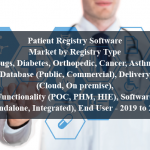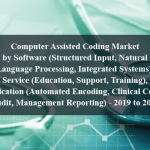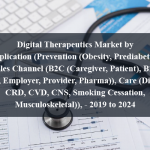OVERVIEW
The Cardiac Monitoring & Cardiac Rhythm Management Devices Market is projected to grow significantly from USD 22.5 billion in 2024 to an estimated USD 37.8 billion by 2029, reflecting a CAGR of 10.9% during the forecast period. These devices are essential for diagnosing, monitoring, and managing heart conditions, including arrhythmias, heart failure, and other cardiovascular diseases. The market includes devices such as electrocardiograms (ECGs), Holter monitors, event monitors, implantable loop recorders, pacemakers, defibrillators, and cardiac resynchronization therapy (CRT) devices. The increasing prevalence of cardiovascular diseases, advancements in device technology, and the growing demand for remote monitoring are driving the market’s growth.
The market’s expansion is also supported by rising healthcare expenditure, increased awareness of heart disease management, and the integration of advanced technologies such as AI and IoT in cardiac monitoring and rhythm management. However, challenges such as high costs of advanced devices, stringent regulatory requirements, and the risk of device malfunctions need to be addressed to sustain market growth.
Geographically, North America and Europe dominate the cardiac monitoring and cardiac rhythm management devices market due to their advanced healthcare infrastructure, significant investments in cardiovascular research, and high adoption rates of innovative medical technologies. The Asia Pacific region is also expected to witness substantial growth, driven by increasing healthcare expenditure, growing awareness of cardiovascular health, and the expanding healthcare sector.
Market Dynamics
Drivers:
The primary driver of the Cardiac Monitoring & Cardiac Rhythm Management Devices Market is the increasing prevalence of cardiovascular diseases. Cardiovascular diseases (CVDs) remain the leading cause of death globally, with millions of new cases diagnosed annually. The rise in the aging population, coupled with lifestyle changes and increasing incidence of risk factors such as hypertension, diabetes, and obesity, has led to a growing demand for effective cardiac monitoring and rhythm management solutions. These devices play a crucial role in early diagnosis, continuous monitoring, and management of heart conditions, improving patient outcomes and reducing the burden on healthcare systems. Additionally, advancements in device technology, such as the development of wireless and wearable devices, are enhancing the capabilities of cardiac monitoring and rhythm management, contributing to market growth.
Another significant driver is the growing demand for remote monitoring solutions. Patients and healthcare providers are increasingly opting for devices that enable remote monitoring of cardiac conditions, offering greater convenience and continuous care. Remote monitoring devices, such as implantable loop recorders and wearable ECG monitors, allow for real-time tracking of heart health, early detection of abnormalities, and timely intervention. The integration of advanced technologies, such as AI and IoT, is further enhancing the capabilities of remote monitoring devices, enabling more accurate data analysis and personalized treatment plans. The rising preference for remote monitoring and the continuous advancements in cardiac monitoring and rhythm management technologies are driving the growth of the market.
Key Opportunities
The Cardiac Monitoring & Cardiac Rhythm Management Devices Market presents numerous opportunities for growth and innovation, particularly in the development and integration of advanced technologies. One prominent opportunity lies in the increasing use of artificial intelligence (AI) and machine learning (ML) within cardiac care. AI and ML can enhance the capabilities of cardiac monitoring and rhythm management devices by automating data analysis, improving the accuracy of diagnosis, and providing intelligent insights for personalized treatment. For instance, AI-powered algorithms can analyze large datasets from cardiac devices, identify patterns, and predict potential complications, facilitating early intervention and improving patient outcomes. The integration of AI and ML with cardiac devices is expected to drive market growth by enabling more intelligent and automated cardiac care solutions.
The growing focus on telemedicine and digital health presents another lucrative opportunity for the cardiac monitoring and cardiac rhythm management devices market. Telemedicine and digital health platforms are increasingly being adopted to provide remote consultations, continuous monitoring, and virtual care for patients with chronic heart conditions. Cardiac monitoring devices that can seamlessly integrate with telemedicine platforms and digital health applications are in high demand. These integrated solutions enable healthcare providers to remotely monitor patients, access real-time data, and make informed clinical decisions, enhancing the efficiency and effectiveness of cardiac care. Vendors that invest in the development of telemedicine-compatible cardiac devices and digital health solutions are well-positioned to capitalize on this market trend.
Restraints:
One of the significant restraints in the cardiac monitoring and cardiac rhythm management devices market is the high cost of advanced devices. The development and deployment of sophisticated cardiac technologies, such as implantable defibrillators and wireless monitoring devices, require substantial investments in research, equipment, and training. The high upfront costs and ongoing maintenance expenses can be a barrier to adoption, particularly for small and medium-sized healthcare facilities with limited budgets. Additionally, the cost of consumables and replacement parts used in cardiac devices further increases the total cost of ownership. To overcome this restraint, vendors need to offer cost-effective solutions and flexible pricing models that cater to the diverse needs of healthcare providers.
Stringent regulatory requirements and the risk of device malfunctions pose another challenge for the cardiac monitoring and cardiac rhythm management devices market. Cardiac devices and their associated technologies must undergo rigorous validation and approval processes to ensure their safety, efficacy, and reliability. Compliance with regulatory standards, such as the FDA’s premarket approval (PMA) and the European Union’s Medical Device Regulation (MDR), is essential for market entry and commercialization. The risk of device malfunctions, such as battery failure or software glitches, further complicates the regulatory landscape and can lead to serious health complications for patients. Ensuring compliance with regulatory requirements and maintaining high-quality standards is critical for the successful deployment and operation of cardiac devices. Vendors must navigate these regulatory challenges and invest in quality assurance to meet the stringent requirements of the healthcare industry.
Regional Information:
- North America
North America remains a significant market for cardiac monitoring and cardiac rhythm management devices, characterized by advanced healthcare infrastructure, high adoption rates of innovative medical technologies, and substantial investments in cardiovascular research and development. The region’s strong presence of leading medical device manufacturers and the high focus on enhancing cardiovascular care drive market growth. The increasing prevalence of cardiovascular diseases, such as atrial fibrillation and heart failure, is propelling the adoption of cardiac monitoring and rhythm management solutions in the region. Furthermore, stringent regulatory requirements and the need for robust cardiac care options encourage healthcare providers to invest in advanced cardiac technologies. However, the high cost of devices and regulatory complexities remain challenges that need to be addressed to fully capitalize on the market potential.
- Europe
Europe leads in the adoption of cardiac monitoring and cardiac rhythm management devices, driven by stringent regulatory requirements, significant investments in healthcare infrastructure, and a strong commitment to improving cardiovascular health outcomes. The region’s focus on innovation and technological advancement fuels the demand for advanced cardiac solutions. Countries like the UK, Germany, and France are at the forefront of implementing cardiac monitoring and rhythm management technologies to enhance diagnostic and treatment capabilities and ensure compliance with regulatory standards. The European Union’s regulations, such as the Medical Device Regulation (MDR) and the In Vitro Diagnostic Regulation (IVDR), mandate stringent data protection and quality assurance measures, further driving market growth. However, economic uncertainties and the complexity of regulatory compliance necessitate strategic planning and risk management to navigate the market landscape effectively.
- Asia Pacific
The Asia Pacific region is expected to witness the highest growth rate in the cardiac monitoring and cardiac rhythm management devices market due to rapid digital transformation, increasing healthcare expenditure, and the expanding healthcare sector. Countries like China, India, and Japan are investing heavily in cardiac solutions to support business growth and enhance cardiovascular care capabilities. The region’s expanding middle class and rising disposable incomes are also contributing to the increasing adoption of cardiac monitoring and rhythm management devices in various sectors such as hospitals, clinics, and home healthcare settings. Governments in the region are implementing initiatives to promote digitalization and support the growth of the healthcare economy, further driving market growth. However, challenges related to regulatory compliance, fluctuating economic conditions, and the need for skilled healthcare professionals necessitate localized strategies and market insights for successful market penetration.
Recent Developments:
In 2023, Abbott launched Asert-IQ, a Bluetooth-enabled insertable cardiac monitor for the long-term monitoring of heart rhythms.
In 2023, Boston Scientific received FDA clearance and launched the next-generation LUX-Dx II/II+ ICM system for long-term monitoring of arrhythmias.
Key market Players:
Medtronic plc, Abbott Laboratories, Boston Scientific Corporation, Biotronik SE & Co. KG, Koninklijke Philips N.V.
Frequently Asked Questions
1) What is the projected market value of the Cardiac Monitoring & Cardiac Rhythm Management Devices Market?
– The Cardiac Monitoring & Cardiac Rhythm Management Devices Market is expected to reach an estimated value of USD 37.8 billion in revenue by 2029.
2) What is the estimated CAGR of the Cardiac Monitoring & Cardiac Rhythm Management Devices Market over the 2024 to 2029 forecast period?
– The CAGR is estimated to be 10.9% for the Cardiac Monitoring & Cardiac Rhythm Management Devices Market over the 2024 to 2029.
3) Who are the key players in the Cardiac Monitoring & Cardiac Rhythm Management Devices Market?
– The primary drivers for the Cardiac Monitoring & Cardiac Rhythm Management Devices Market include the increasing prevalence of cardiovascular diseases, the growing demand for remote monitoring solutions, and advancements in cardiac device technology. These factors are contributing to the rising demand for cardiac monitoring and rhythm management solutions. The integration of AI and IoT in cardiac devices is also driving market growth.
5) What are the restraints and challenges in the Cardiac Monitoring & Cardiac Rhythm Management Devices Market?
– The high cost of advanced cardiac devices and stringent regulatory requirements are significant challenges in the market. These factors can limit the adoption of advanced cardiac technologies. Additionally, the risk of device malfunctions and ensuring compliance with regulatory standards poses challenges that need to be addressed to ensure effective and secure cardiac care operations.
6) What are the key applications and offerings of the Cardiac Monitoring & Cardiac Rhythm Management Devices Market?
– Cardiac monitoring and cardiac rhythm management devices are essential for providing accurate and continuous monitoring of heart health in various medical settings. They support advanced diagnostic and therapeutic techniques, enabling precise detection and management of cardiac conditions such as arrhythmias and heart failure. These devices improve patient outcomes by enhancing diagnostic accuracy, enabling early intervention, and facilitating personalized treatment plans. Additionally, they are crucial in settings such as hospitals, clinics, home healthcare, and emergency care, enhancing the efficiency and effectiveness of cardiovascular care.
7) Which region is expected to drive the market for the forecast period?
– Asia pacific is expected to have the highest market growth from 2024 to 2029
Why Choose Us?
Insights into Market Trends: Global Market Studies reports provide valuable insights into market trends, including market size, segmentation, growth drivers, and market dynamics. This information helps clients make strategic decisions, such as product development, market positioning, and marketing strategies.
Competitor Analysis: Our reports provide detailed information about competitors, including their market share, product offerings, pricing, and competitive strategies. This data can be used to inform competitive strategies and to identify opportunities for growth and expansion.
Industry Forecasts: Our reports provide industry forecasts, which will inform your business strategies, such as investment decisions, production planning, and workforce planning. These forecasts can help you to prepare for future trends and to take advantage of growth opportunities.
Access to Industry Experts: Our solutions include contributions from industry experts, including analysts, consultants, and subject matter experts. This access to expert insights can be valuable for you to understand the market.
Time and Cost Savings: Our team at Global Market Studies can save you time and reduce the cost of conducting market research by providing comprehensive and up-to-date information in a single report, avoiding the need for additional market research efforts.












